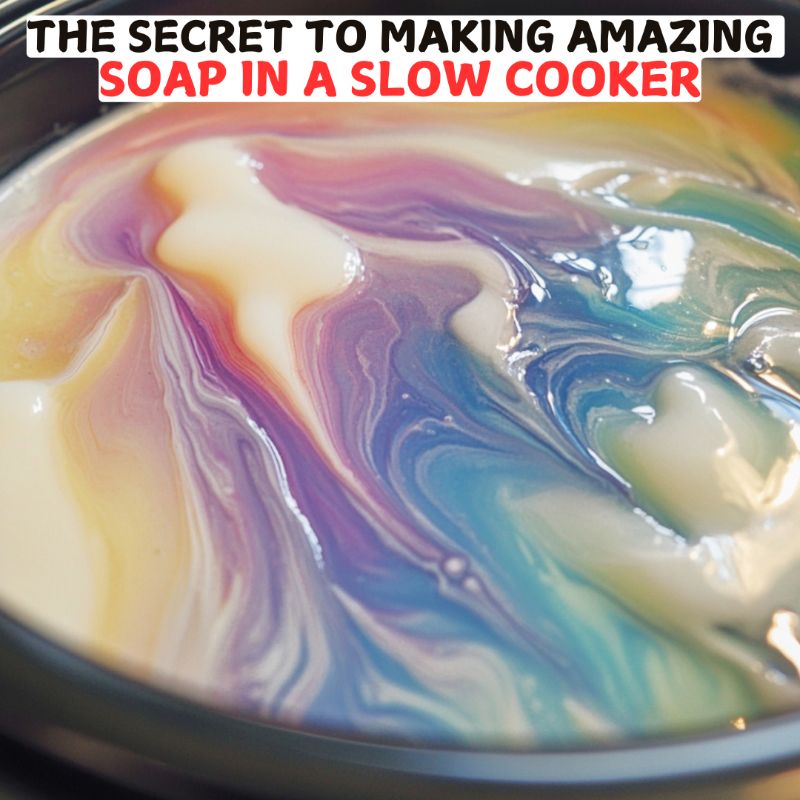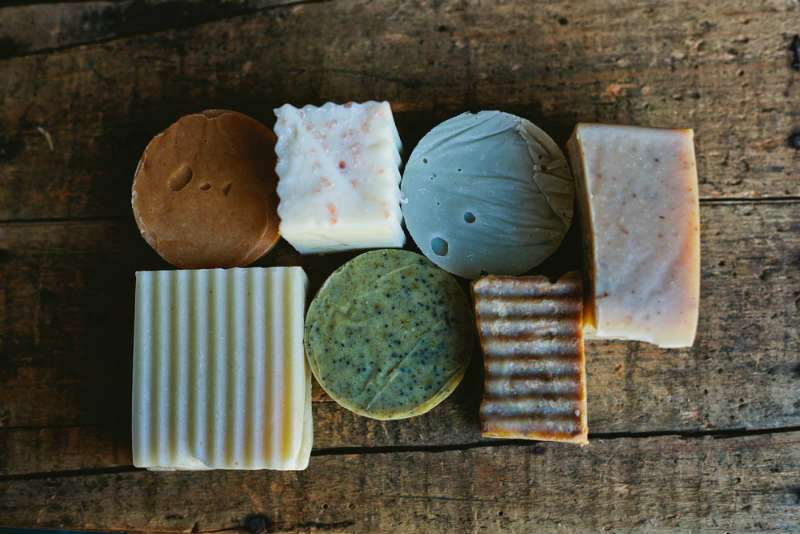The Secret to Making Amazing Soap in a Slow Cooker

Make sure to like Living Green and Frugally on Facebook, Shop at Amazon to help support my site and explore our PINTEREST BOARDS for innovative ways you can become self-sufficient.
Understanding the Alchemy of Soap Making:
At its core, soap-making involves the fusion of oils or fats with an alkaline substance, such as lye (sodium hydroxide), through a chemical reaction known as saponification. This transformation not only births soap but also yields glycerin, a natural moisturizer that pampers the skin. Methods like hot process soap-making expedite the saponification process, offering a quicker cure time compared to the traditional cold process.
The Benefits of Crafting Homemade Soap:
Creating your soap bestows a treasure trove of advantages:
1. Personalized Skincare:
- Control Over Ingredients: Crafting your soap grants control over the components, enabling customization for various skin types and preferences.
- Nourishment and Natural Elements: Homemade soap often includes natural oils, essential oils, and additives that benefit the skin, eschewing harsh chemicals found in mass-produced varieties.
2. Artistic Expression and Creativity:
- Artistry in Scent, Color, and Texture: Soap-making embodies creative freedom, allowing the infusion of scents, hues, and textures to produce unique, bespoke bars.
- An Outlet for Expression: Experimentation with diverse ingredients fosters a canvas for self-expression, resulting in beautifully crafted bars.
3. Importance of Safety and Know-How:
- Crucial Safety Measures: Working with lye demands strict adherence to safety protocols, such as wearing protective gear and maintaining a well-ventilated workspace.
- Comprehensive Understanding: Mastering soap-making entails comprehending the chemistry involved, ensuring both safety and successful soap creation.
Why Embrace the Art of Soap Making:
1. Cultivating Self-Sufficiency and Sustainability:
- Empowerment through Skill: Acquiring soap-making proficiency nurtures self-sufficiency, diminishing reliance on commercial products.
- Sustainability in Practice: Crafting homemade soap promotes eco-consciousness by reducing waste and supporting sustainable skincare practices.
2. Healthier Skin Choices:
- Prioritizing Natural Ingredients: The ability to select natural components fosters a healthier skincare regimen, devoid of harmful additives prevalent in mass-produced alternatives.
3. Exploring Cost-Effectiveness and Creativity:
- Economical Alternatives: In the long run, crafting your soap can be cost-effective, especially when compared to purchasing high-quality artisanal soaps.
- A Playground for Creativity: Soap-making stands as a playground for imagination, enabling the production of luxurious, personalized bars.
In essence, delving into the world of homemade soap offers a multidimensional experience. It merges the scientific intrigue of chemical reactions with the artistic thrill of creation, all while advocating for healthier, sustainable skincare choices. However, embarking on this aromatic journey necessitates a steadfast commitment to safety practices, ensuring that every soap-making venture becomes a safe and gratifying endeavor. So, grab your protective gear, unleash your creativity, and embark on the satisfying journey of crafting your very own bars of skincare indulgence!

The Secret to Making Amazing Soap in a Slow Cooker
Making soap at home is an ancient craft that marries science, creativity, and self-care, offering a pathway to craft bespoke skincare tailored to individual needs. The art of soap-making involves the alchemy of oils or fats with alkaline substances like lye, resulting in a magical chemical reaction known as saponification. This process not only births soap but also yields glycerin, a natural moisturizer that pampers the skin. Hot process soap-making accelerates this transformation, offering a quicker cure time compared to the traditional cold process.
Ingredients:
- 16 oz (450g) Coconut Oil
- 16 oz (450g) Olive Oil
- 16 oz (450g) Sustainable Palm Oil
- 12.54 oz (355g) Distilled Water
- 4.9 oz (139g) Sodium Hydroxide (Lye)
- 2 oz (57g) Essential Oils (e.g., lavender, peppermint, tea tree for fragrance, optional)
- Additional additives (such as dried herbs, oatmeal, or clays) for texture and exfoliation (optional)
Equipment:
- Slow Cooker
- Digital Scale
- Immersion Blender
- Rubber Gloves
- Safety Goggles
- Stainless Steel or Heat-Resistant Plastic Spatulas
- Soap Mold
Preparation:
1, Safety First: Put on your safety gear and ensure a well-ventilated workspace.
2, Prepare the Workspace: Set up your slow cooker in a well-ventilated area dedicated solely to soap-making.
3, Measure the Ingredients: Weigh the oils and combine them in the slow cooker. Turn the slow cooker on low to begin warming the oils.
4, Prepare the Lye Solution: Carefully combine lye with water, stirring continuously until dissolved. Allow the lye solution to cool down.
Soap Making Process:
5,. Combine the Lye Solution and Oils: When both solutions are at a similar temperature (around 100-110°F or 38-43°C), slowly pour the lye solution into the slow cooker containing the oils.
6, Mix and Blend: Use an immersion blender to blend the mixture until it reaches “trace,” thickening and leaving a trail on the surface.
7, Cooking the Soap: Cover the slow cooker and let the soap cook on low heat for approximately 1-2 hours. Stir occasionally.
8, Check for Doneness: The soap is ready when it looks glossy and the pH has neutralized. Perform a “zap test” to ensure it’s safe.
9, Adding Essential Oils: Once cooked, mix in essential oils for fragrance. Stir well.
10, Molding the Soap: Pour the soap into molds, smoothing the surface with a spatula.
11, Cooling and Cutting: Allow the soap to cool and harden in the molds for 24-48 hours. Remove from molds and cut into bars if needed.
12, Curing: Let the bars cure for 4-6 weeks in a cool, dry place before using.
Soap-making, an ancient craft steeped in tradition, has evolved into a delightful blend of science, artistry, and self-care. Crafting soap offers a gateway to creating personalized skincare solutions while embracing the therapeutic process of handmade artistry. Whether you’re an enthusiast or a novice, delving into soap-making not only unveils the secrets of saponification but also grants you the power to fashion nourishing bars tailored to your skin’s needs.